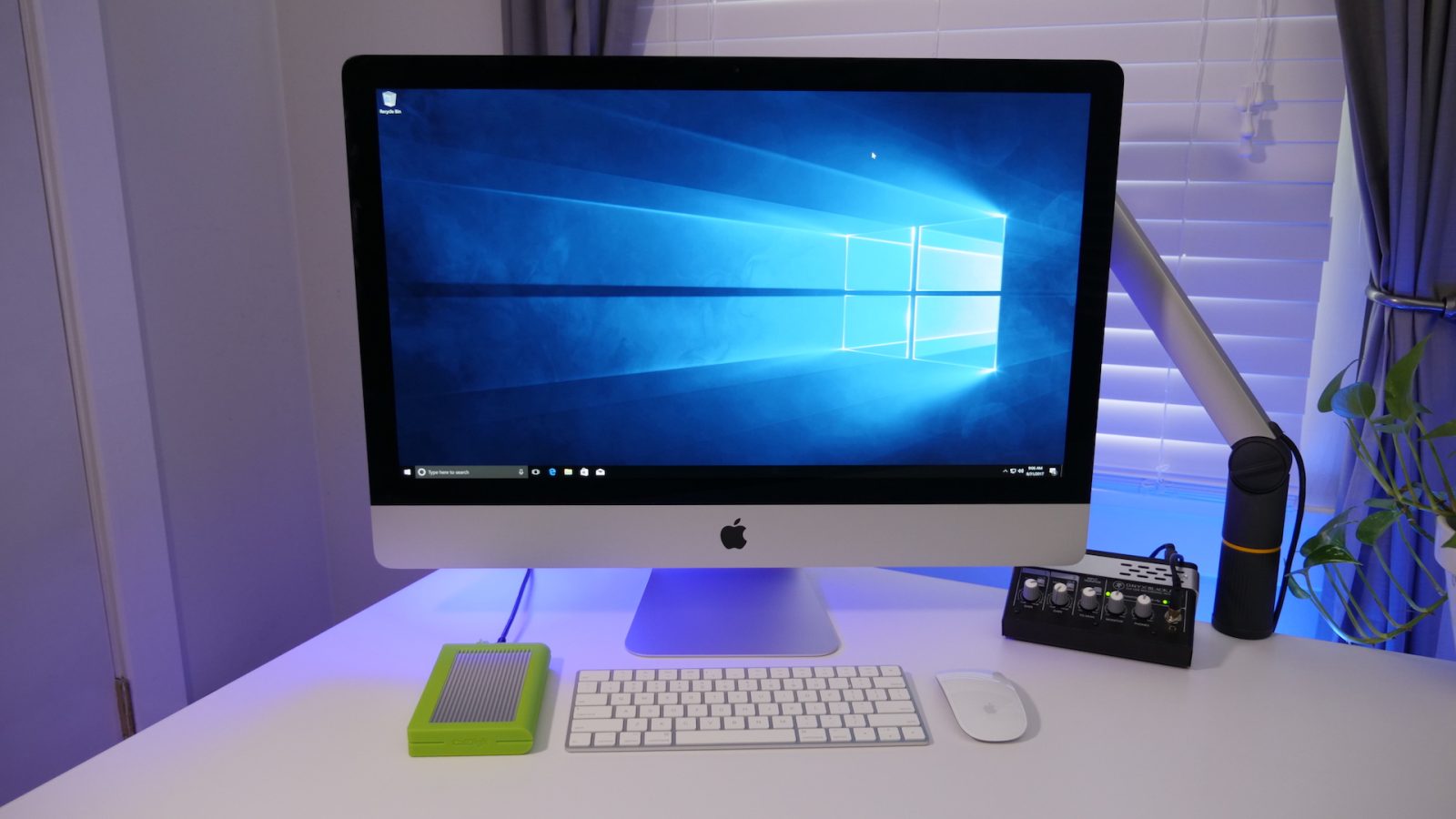I have an external USB SSD install with Windows 10.
- At this point, the Windows installer has copied all the files to the external drive, and has set up a boot environment that you can start your Mac from. Next time you boot from the external drive, Windows will complete the installation process. Restart Your Mac With the External Windows Drive 1) Close any apps you may have open, then restart.
- When you do that, you should see at least four icons. In my case, I have five because I have Windows installed using Boot Camp. Anyway, the grey MacBook and Recovery 10.11.2 icons are for my internal OS X and the orange OS X and Recovery 10.11.3 are for the version installed on my external drive. Use the arrow keys to select which drive to boot from and then simply press Enter.
Plug the external hard drive into your Mac. Start your Mac and hold the ALT (⎇) key to choose the Windows Drive you just installed. Windows will boot, and then will reboot the computer. At the boot chime hold ALT key and again choose the Windows drive. Start Writing. Start Writing Help; About; Start Writing; Sponsor: Brand-as-Author; Sitewide Billboard. Jun 22, 2013 This option on boot trick works for quite literally any boot volume, whether it’s an external USB drive of any sort, a Thunderbolt hard drive, boot DVD, CD, the Recovery partition, even in dual-boot environments with other versions of OS X, or a Linux or a Windows partition with Boot Camp, if it’s bootable and connected to the Mac it will be visible at this boot manager.

On my MacBook Pro 15' mid 2014 I can press option on boot and it will show up and I can boot to Windows.
However when I try on my MacBook Air 13' early 2015, pressing option on boot doesn't show up the external USB SSD, only macOS partition is shown. When I boot in to macOS, I can view the external USB thus the USB port is not faulty, I also try again on my MacBook Pro and its able to boot up to Windows with no problem
How to access it on my MacBook Air? I tried on both USB ports doesn't work.
The only different is on my MacBook Air I turn on FileVault which is require by my company while the MacBook Pro don't as I use at home.
Any help is appreciated. Thanks in advance.
MacBook Air, Mac OS X (10.7.5)
Posted on
By default, your Mac starts up from its built-in hard disk, but a startup disk can be any storage device that contains an operating system compatible with your Mac. For example, if you install macOS on an internal or external drive, your Mac can recognize that drive as a startup disk. You can then follow the steps in this article to start up from it.
Use Startup Disk preferences
Mac Mini Boot Camp External Drive
When you use Startup Disk preferences to select a startup disk, your Mac starts up from that disk until you choose a different one.

- Choose Apple menu > System Preferences, then click Startup Disk.
- Click the lock and enter your administrator password.
- Select your startup disk, then restart your Mac.
If you see a message that your security settings do not allow this Mac to use an external startup disk, check the External Boot setting in Startup Security Utility.
Use Startup Manager
When you use Startup Manager to select a startup disk, your Mac starts up from that disk once, then returns to using the disk selected in Startup Disk preferences.
- Press and hold the Option (Alt) key immediately after turning on or restarting your Mac.
- Release the Option key when you see the Startup Manager window.
If your Mac is protected by a firmware password, you can release the key when you're asked to enter the password. - Select your startup disk, then click the arrow under its icon, or press Return.
If you press and hold the Control key during this step, your selection is saved in Startup Disk preferences, so it persists until you change it.
If your Mac is using OS X Lion 10.7.3 or later, you can also use this method to start up from your Time Machine backup disk. Startup Manager identifies your Time Machine backup as ”EFI Boot.”
If you can't select your startup disk or start up from it
Check for these possibilities if you can't see your disk in Startup Disk preferences or Startup Manager, or your Mac won't start up from it.
Check for a compatible operating system on the startup disk
Make sure that your startup disk is using a version of macOS that is compatible with your Mac.
To start up from an external disk with macOS Catalina 10.15 or later, the disk must connect via USB-A, USB-C, or Thunderbolt, not FireWire.
Check startup security settings
If you're using a Mac that has the Apple T2 Security Chip, check the settings in Startup Security Utility. These settings determine whether your Mac can start up from another disk.
Check for Option ROM firmware
Mac Boot Camp External Drive
If you're in Startup Manager and can't see a third-party startup disk, the startup disk could be using Option ROM firmware. To enhance system security, Mac computers with up-to-date software don’t show devices that use Option ROM firmware until you load their firmware. To do that, press Option-Shift-Command-Period while in Startup Manager. If your startup disk appears, do that each time you want to start up from it or from another disk connected to it.
Mac Mini 2018 Boot Camp External Drive
If you're using a firmware password, the ability to load Option ROM firmware is disabled as an additional security protection.